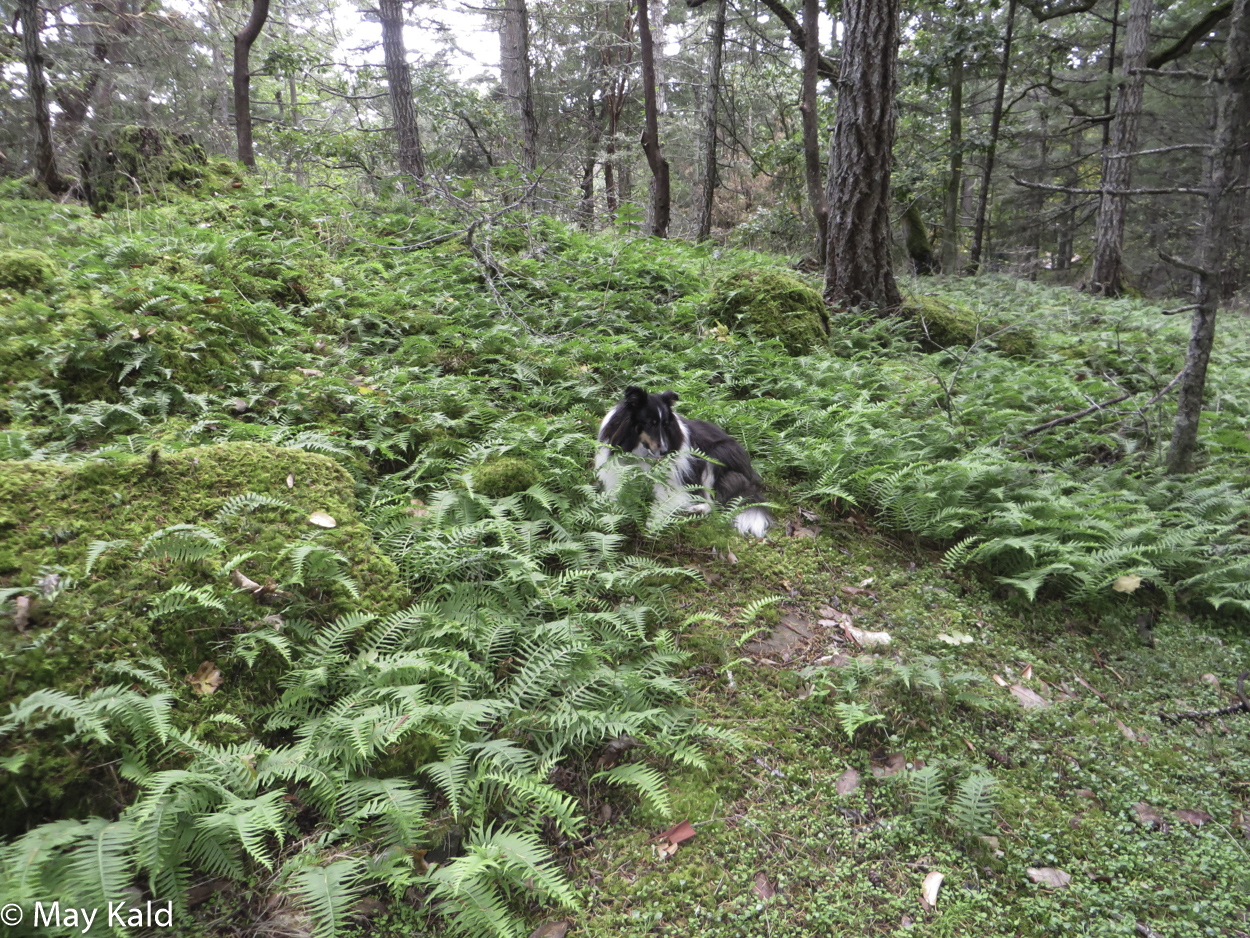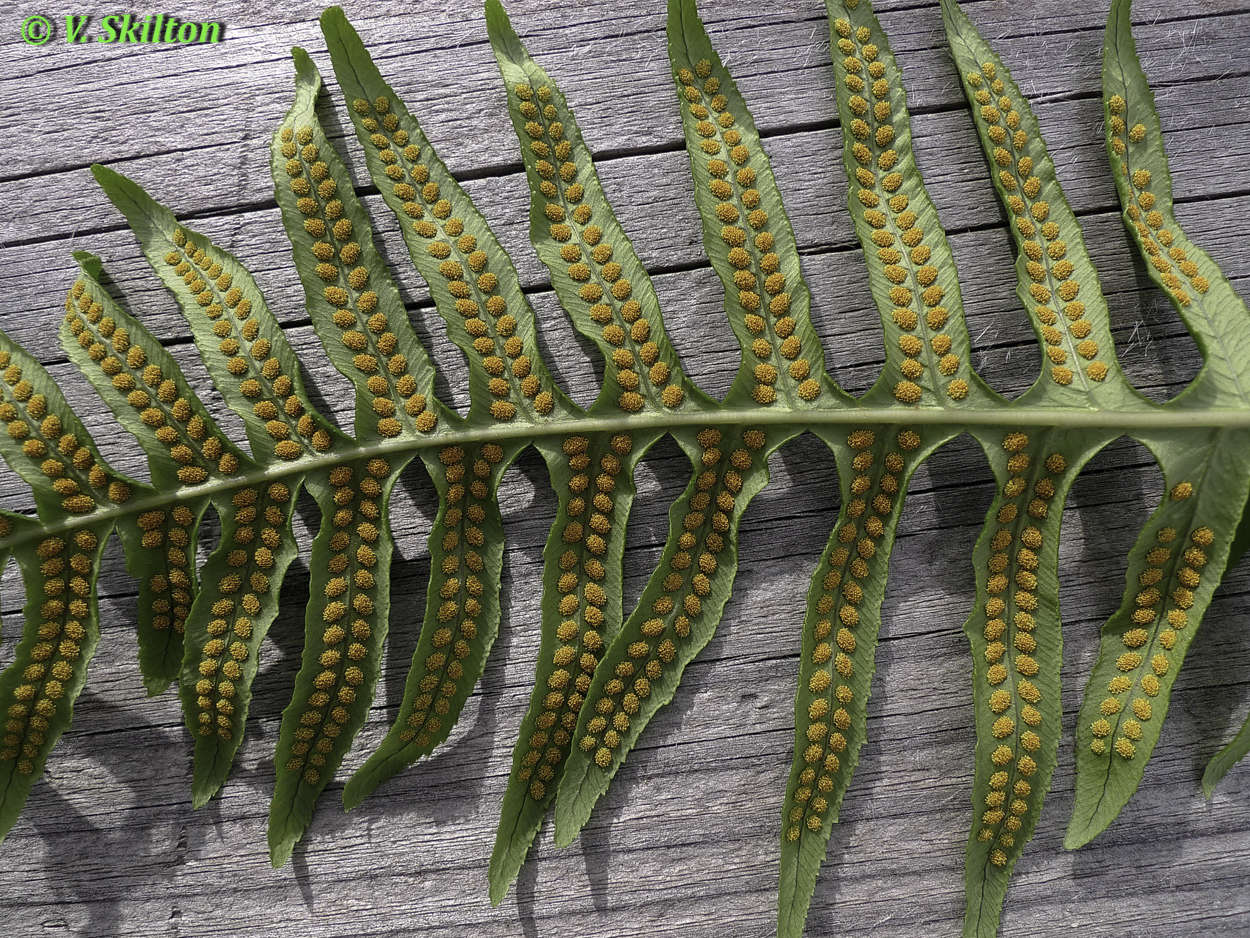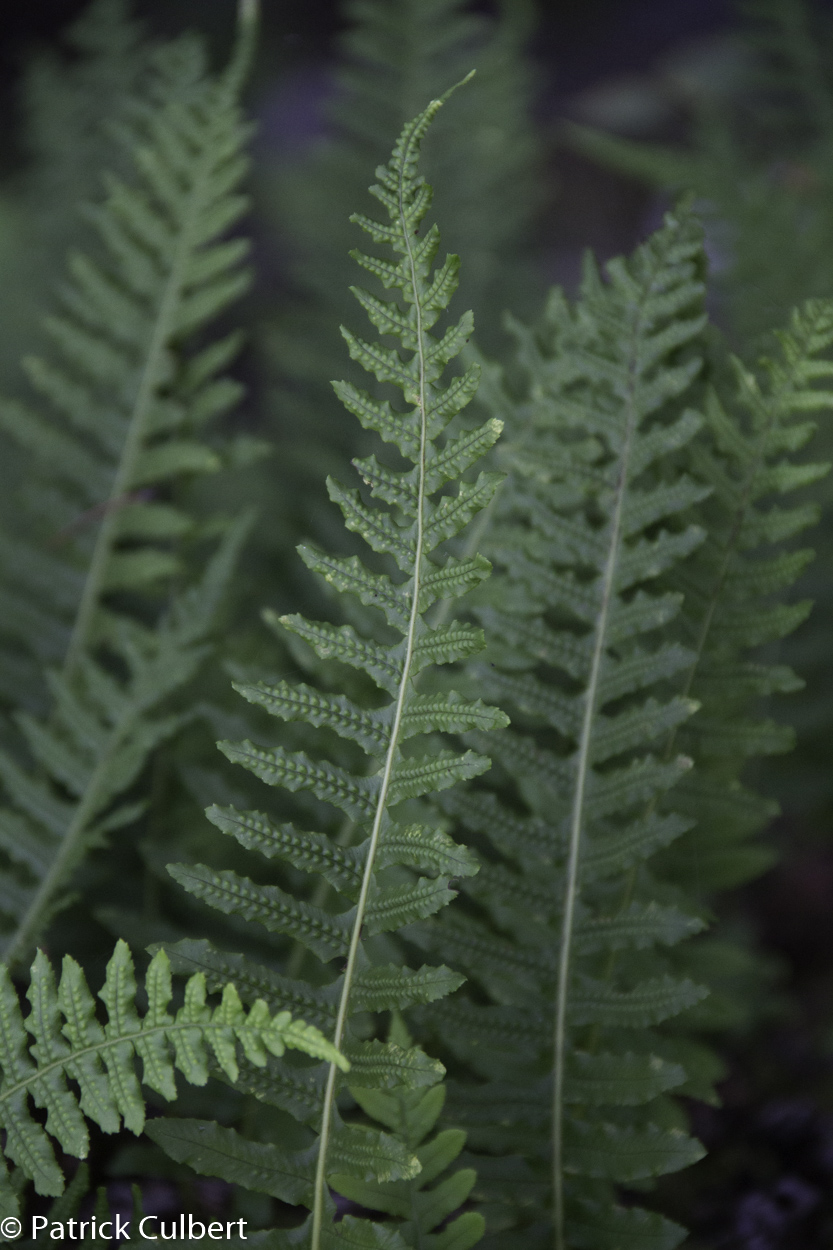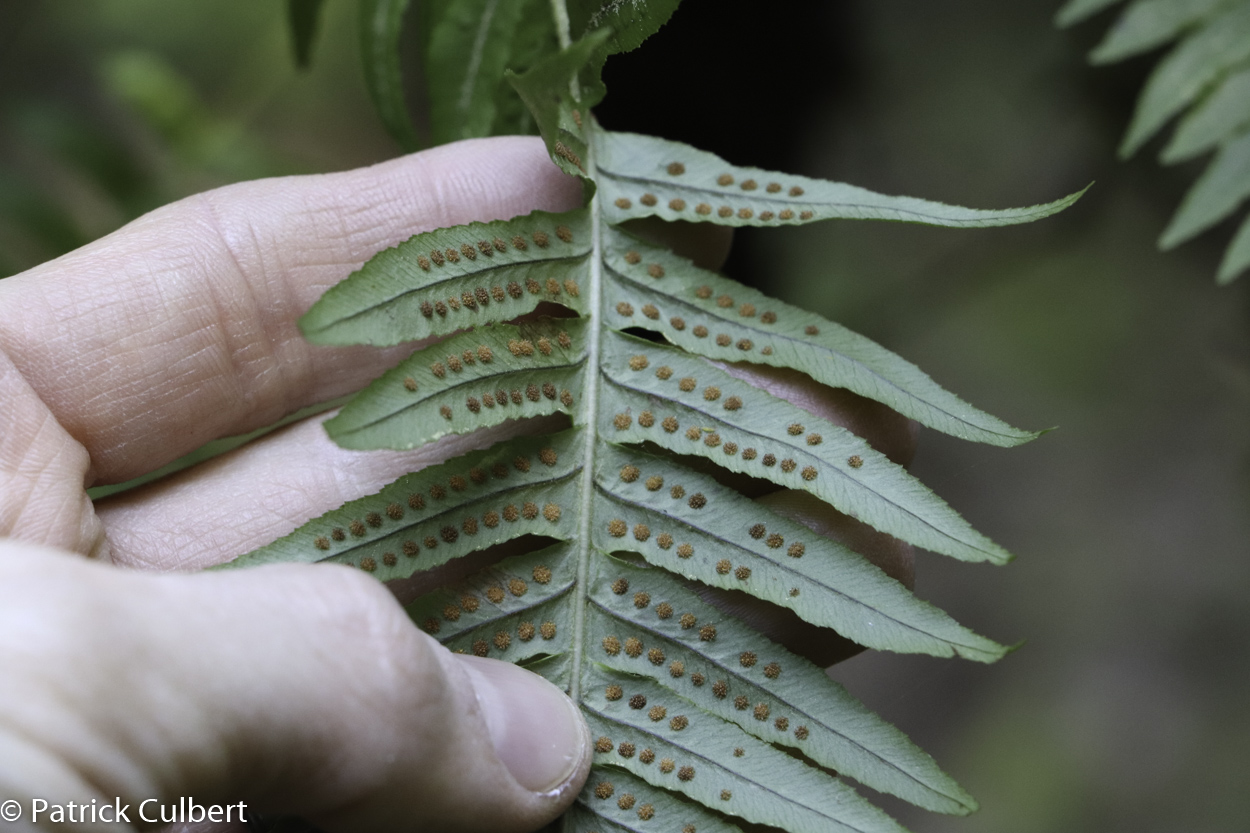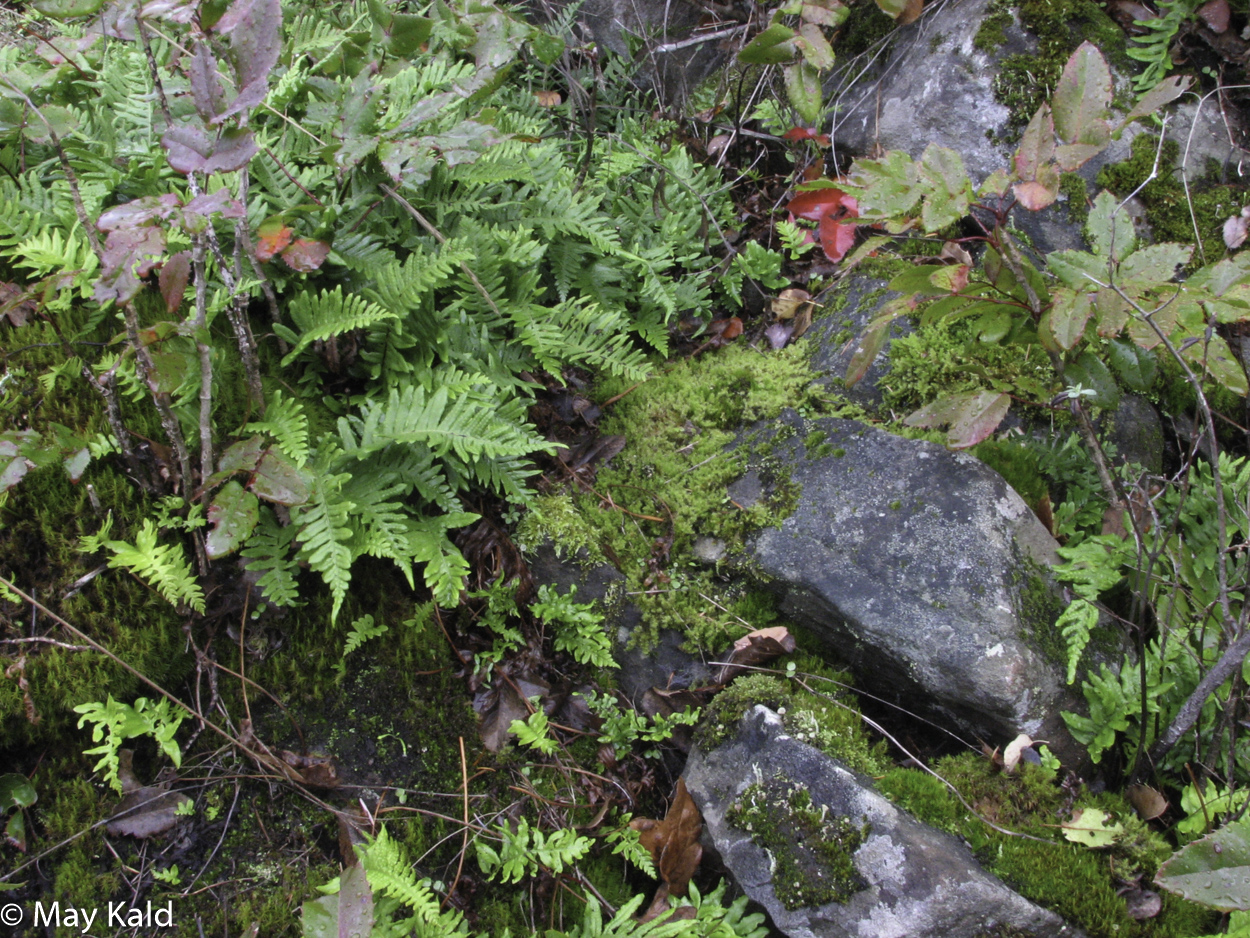Polypodium glycyrrhiza – licorice fern
Common Name
licorice fern
Family
Polypodiaceae
Scientific Name
Polypodium glycyrrhiza
Alternate Scientific Name
- Polypodium vulgare
Soil Moisture Regime (SMR)
- Dry (D)
- Moderately Dry (MD)
- Medium (M)
- Wet (W)
Soil Nutrient Regime (SNR)
- Rich (R)
Hitchcock, C. Leo, and Arthur Cronquist. Flora of the Pacific Northwest: An Illustrated Manual © 1973. Reprinted with permission of the University of Washington Press.
General / Habitat
- Small evergreen shrub that is epiphytic on tree trunks and branches
- Occasionally found on wet, mossy logs or rocks
- Found only at low elevations.
Key Identifying Characteristics
- Form: Grows from a creeping, reddish-brown, scaly rhizome (root). The rhizome is very sweet and tastes like licorice.
- Leaves: straw-coloured stipes, blades longer than stipes and once pinnate, leaflets ~3 cm with pointed tips
- Sori: oval to round, lacking an indusium
Lookalikes
- There are three other Polypodium in our region ( Polypodium scouleri, Polypodium amorphum and Polypodium hesperium)
- best way to tell them apart is that these three have rounded leaflet tips
- Polypodium scouleri and Polypodium amorphum also do not taste of licorice
Interesting Characteristics
- Often chewed or brewed into a sweet tea by coastal peoples
- Polypodium means “many-footed”, referring to the fact that its fronds do not grow from one central location (in contrast to many other ferns)
Co-occurring Species
- Often occurs on bigleaf maple
External References
Sources
Douglas, G.W. et al (Editors). 1998-2002. Illustrated Flora of British Columbia, Volumes 1 to 8. B.C. Min. Environ., Lands and Parks, and B.C. Min. For., Victoria, B.C.
Pojar, J. and A. MacKinnon. 2014. Plants of Coastal British Columbia Including Washington, Oregon & Alaska. B.C. Ministry of Forestry and Lone Pine Publishing. Vancouver, B.C.


